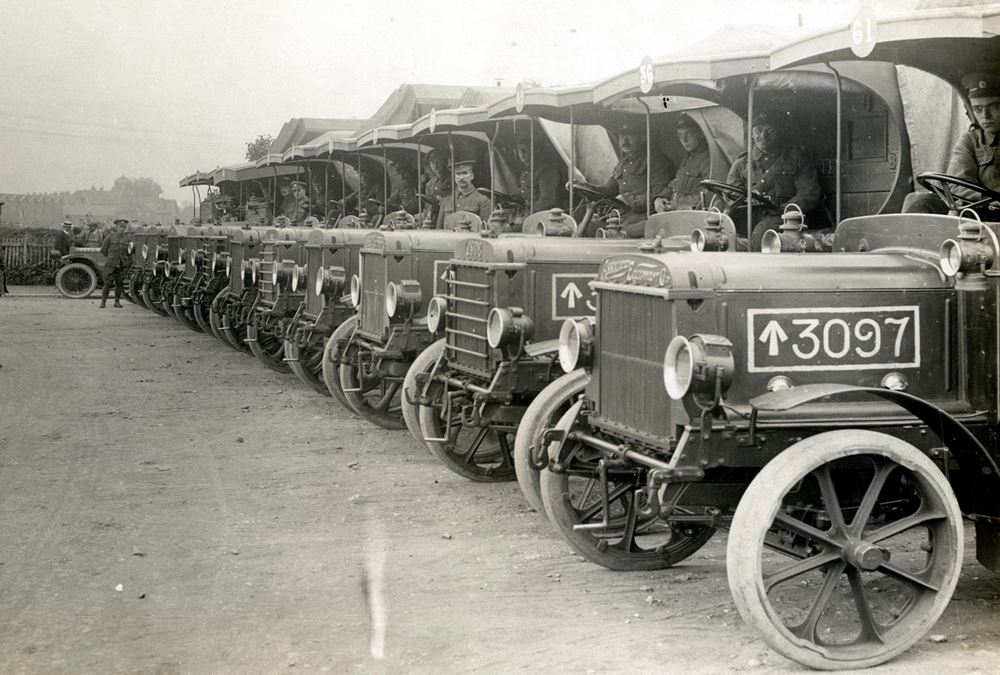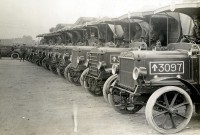- Home
- Business Processes
- Industry Knowledge
- Aerospace Industry
- Automotive Industry
- Banking Domain
- BFSI Industry
- Consumer/ FMCG Industry
- Chemicals Industry
- Engineering & Construction
- Energy Industry
- Education Domain
- Finance Domain
- Hospitality Domain
- Healthcare Industry
- Insurance Domain
- Retail Industry
- Travel and Tourism Domain
- Telecom Industry
- Leadership Skills
- eLearning
- Home
- Industry Knowledge
- Automotive Industry
- History of Automotive Industry
History of Automotive Industry
The study of the automotive industry is inherently interesting: it is massive, it is competitive, and it is just a few years older than a century. It is expected to undergo major changes in recent times due to the impact of globalization, increased regulations because of environmental concerns, and rising fossil fuel prices due to decreasing oil reserves.
The evolution of the automotive industry has been influenced by various innovations in fuels, vehicle components, societal infrastructure, and manufacturing practices, as well as changes in markets, suppliers and business structures.
The year 1600:
Some historians cite examples as early as the year 1600 of sail-mounted carriages as the first vehicles to be propelled by something other than animals or humans. However, it is believed by most historians that the key starting point for the automobile was the development of the engine.
First Fuel Engine in 1876:
The engine was developed as a result of discovering new energy-carrying mediums, such as steam in the 1700s, and new fuels, such as gas and gasoline in the 1800s. Shortly after the invention of the 4-stroke internal combustion gasoline-fueled engine in 1876, the development of the first motor vehicles and establishment of the first automotive firms in Europe and America occurred.
First Practical Automobile in 1885:
The first practical automobile with a petrol engine was built by Karl Benz in 1885 in Mannheim, Germany. Benz was granted a patent for his automobile on 29 January 1886, and began the first production of automobiles in 1888, after Bertha Benz, his wife, had proved with the first long-distance trip in August 1888 (104 km (65 mi) from Mannheim to Pforzheim and back) that the horseless coach was absolutely suitable for daily use. Since 2008 a Bertha Benz Memorial Route commemorates this event.
Birth of Automotive Industry (1890 – 1910):
During the 1890s and early 1900s, developments of other technologies, such as the steering wheel and floor-mounted accelerator, sped up the development of the automotive industry by making vehicles easier to use. Almost simultaneously, in America, the societal infrastructure that would provide fertile ground for the proliferation of automobiles was being set. Driver’s licenses were issued, service stations were opened, and car sales with loan structures were instituted. Famous vehicle models such as Ford’s Model T were developed during these times and, by 1906, car designs began abandoning the carriage look and taking on a more car-like appearance.
Early Automotive Infrastructure Put in Place (1910-1920):
During the 1910s, the development of technologies and societal infrastructure continued in addition to new manufacturing practices and business strategies. Traffic lights started appearing in the U.S. and thousands of road signs were posted by B. F. Goodrich on over 100,000 miles of U.S. roads. Henry Ford’s famous assembly line was launched in 1913, which allowed vehicles to be mass-produced and thus achieved economies of scale. Ford also introduced the concept of using interchangeable and standard parts to further enable the mass production process. Automakers also started to merge with other companies (e.g., GM acquired Chevrolet) and to expand to other markets (e.g., GM of Canada).
The era of Mass Production and Variety (1920-1930):
In the 1920s, the development of infrastructure, adoption of new manufacturing practices, and the merging of companies continued (e.g., Benz and Daimler, Chrysler and Dodge, Ford and Lincoln). In the U.S., the Bureau of Public Roads and the enactment of the Kahn-Wadsworth Bill helped facilitate road-building projects and develop a national road system. In manufacturing, mass production methods became better established, which led to the availability of a wide range of satisfactory cars to the public. While Ford had focused on a single model, GM adopted a new production strategy for providing greater product variety, which helped the company increase its market share by snatching it from Ford.
The decade of New Market Players (1930-1940):
In the 1930s, several new vehicle brands were developed (e.g., Ford Mercury, Lincoln Continental, Volkswagen) and trends in vehicle consumer preferences were established that differentiated the American and European markets. In the U.S. market, consumers preferred luxurious and powerful cars, whereas in Europe consumers preferred smaller and low-priced cars. Also during this time, GM’s product variety strategy continued to give them a competitive advantage over Ford, allowing GM to continue increasing its market share while Ford kept losing theirs.
The End of World War II (1940-1950):
Many European and Asian-Pacific countries led to the development of new products and business strategies. In the 1940s, during World War II (WWII), automotive factories were used to make military vehicles and weapons, thus halting civilian vehicle production. After WWII, the economies of most European and some Asian-pacific countries, such as Japan, were decimated; this required the development of new products and business strategies such as those of Toyota, which began to develop Just in Time (JIT) manufacturing. Most of the first models produced were similar to the pre-war designs since it took some time for the plants to revamp their operations to make new designs and models. Using this strategy there were able to improve return on investment by reducing in-process inventory and lowering carrying costs.
The era of Technological Innovations (1950-1960):
In the 1950s and 1960s, more technological innovations brought many changes in the automotive industry. Some new concepts were, new look and feel of the automobiles, fiberglass bodies, higher compression ratio fuels, vehicle comfort, look and feel, emerging safety and environmental regulations, vehicle speed limits, front seat belts, and, heating and ventilation equipment.
The era of Fuel-Efficient Cars (1970-1980):
The 1970s were marked by stricter environmental regulations and the oil crisis of the early 70s, which led to the development of low emission vehicle technologies, such as catalytic converters. Foreign cars like the Japanese Honda Civic started appearing in the U.S. market. Consumer interest in fuel-efficient vehicles was increasing due to high oil and fuel prices. Vehicles made in Asia that were highly fuel-efficient began increasing their market share in developed markets. This decade also marked the beginning of Lean production by Japanese automakers.
Start of Globalization (1980 – 1990):
In this decade affordable, fuel-efficient vehicles continued to increase their market share. The U.S. automotive industry began losing market share to the higher quality, affordable, and fuel-efficient cars from Japanese automakers. Due to this, vehicle manufacturing became more globalized as auto manufacturers started assembling vehicles from around the world. This trend was accelerated in the 1990s with the construction of overseas facilities and mergers between multinational automakers. This global expansion gave automakers a greater capacity to infiltrate new markets quickly and at lower costs.
Variety & Empowerment of Consumer (1990 – 2000):
The influence of globalization continued in the 1990s. Huge overseas assembly plants were built and many mergers took place between large, multinational automakers. This resulted in a greater variety of products in the marketplace available for consumers to choose from and increased competition among the automotive players. Increasing sophistication and empowerment of the consumer-led to new and more specialized markets with diverse consumer bases such as Southeast Asia and Latin America. This further fuelled global alliances and commercial strategic partnerships with foreign automakers.
The era of Financial Troubles (2000 – Present):
This decade has been tumultuous for automobile and light-duty motor vehicle manufacturers. Industry revenue growth was very low compared to past and skyrocketing fuel prices and growing environmental concerns shifted consumers' preferences away from fuel-guzzling pickup trucks to smaller, more fuel-efficient cars. The global economic crisis that began in 2007, led to financial troubles for many of the world's largest automakers and rippled through other countries around the globe, causing unemployment to rise and wealth to dive. General Motors was hit particularly hard, filing for Chapter 11 bankruptcy in June 2009. Due to lower disposable income and growing pessimism about the future, demand for cars dropped. Motor vehicle sales crashed in 2008 and 2009, although they have recovered strongly since.
Suggested Reading and Resources on Automobile Domain
| Supply & Value Chain | Industry Sectors | The Competitive Landscape |
| Industry Drivers | History of Automotive Industry | Overview of Automotive Industry |
Related Links
You May Also Like
-
Overview of Automotive Industry
The first automobile with a petrol engine was built in 1885 and soon the figure for total cars in the world will be touching a mark of 1000 million cars and light trucks. This article presents a quick overview of what we mean with the Automative Industry and how it started and what is the scale of this industry today.
-
Automotive Industry Supply & Value Chain
Most of the automotive manufacturers employ a business model that demands collaboration between different assemblers and cadre of parts suppliers with a lean, flexible, just-in-time (JIT) assembly process. In this article, we will discuss the business model of a typical automotive manufacturer and the various stages from planning to final retailing of the product.
-
Automotive Industry: The Key Industry Drivers
There are four key business drivers that impact the automotive industry: economic conditions, consumer preferences, government, and technological advances. Globalization is also influencing the industry to a great extent. In this article, we will discuss in detail each of these business drivers.
-
Automotive Industry: The Competitive Landscape
In this article, we will discuss the top key competitors in the automotive industry. This will help you gain an understanding of the major players in the automotive industry. We will start with a brief history of the major players, their competitive advantage, and financial profiles in this section.
-
History of Automotive Industry
The study of the automotive industry is inherently interesting: it is massive, it is competitive, and it is just a few years older than a century. It is expected to undergo major changes in recent times due to the impact of globalization, increased regulations because of environmental concerns, and rising fossil fuel prices due to decreasing oil reserves.
-
Automotive Industry: Industry Sectors
In this article, we will discuss the business sectors of the automotive industry. We will understand the major sectors in the automotive industry and the role they play and their impact on the industry. The major business sectors of the automotive industry are suppliers, auto-manufacturers, and auto dealerships.
Explore Our Free Training Articles or
Sign Up to Start With Our eLearning Courses

About Us
Learning
© 2023 TechnoFunc, All Rights Reserved






